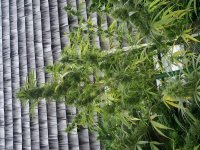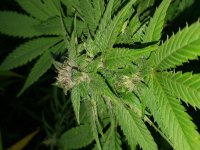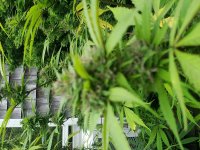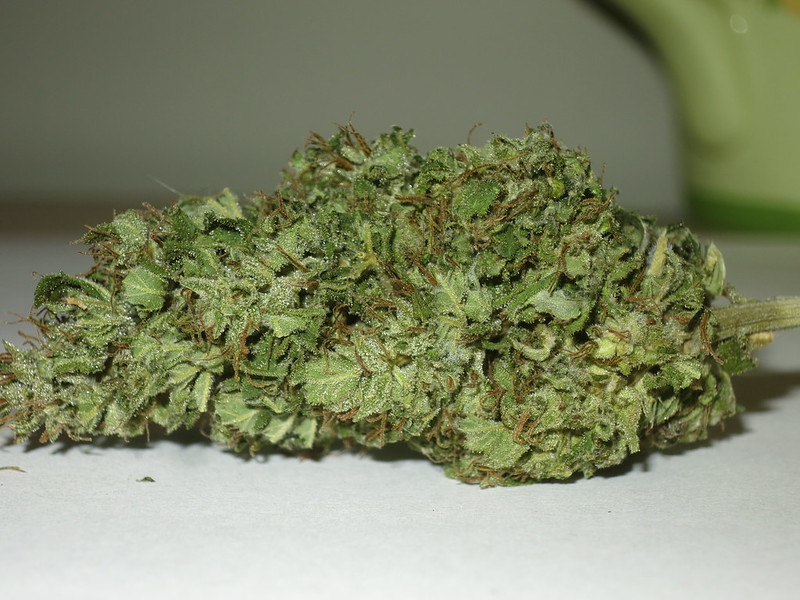Here's another interesting landrace, and correct me if I'm wrong, but a quick google search indicates this strain comes from Kholm, Afghanistan? From a 12 pack of pretty big and fat looking seeds, 9 sprouted, but 3 of them were polyembroyonic, meaning 2 plants emerged from a single seed!
I've read that of the two sprouts arising from a single seed, the runtier plant should be discarded, whereas the bigger one is a clone of the mother plant, can anyone confirm this is correct? If it is true, and polyembryony can be selectively bred for, then this would be another way to preserve clones long term!
Visually speaking, the plants all look similar, but there's clearly a lot of diversity: red pistils, purple bracts(enhanced by cool weather), smells ranging from standard, everyday fuel indica to very subtle fruit background, leafy versus high calyx to leaf ratio, and a wide range of finishing times.
Regarding the aromas, the buds develop very slowly, as do the resin glands. It's very difficult to detect smell at this stage, I'll have more info on that as the buds mature. Most plants aren't developed enough to give off smell.
Some pictures to enjoy! Here's the most vigorous individual from a polyembryonic seed, the runt looks identical but smaller and less vigorous.

Same plant, this is the most showy for now, and is the most advanced in terms of flowering. Bract density is very high, but the size of each bract is normal to slightly small. Check out the red stems, which were present during the vegetative stage:

Typical Tashkurgan leaf:

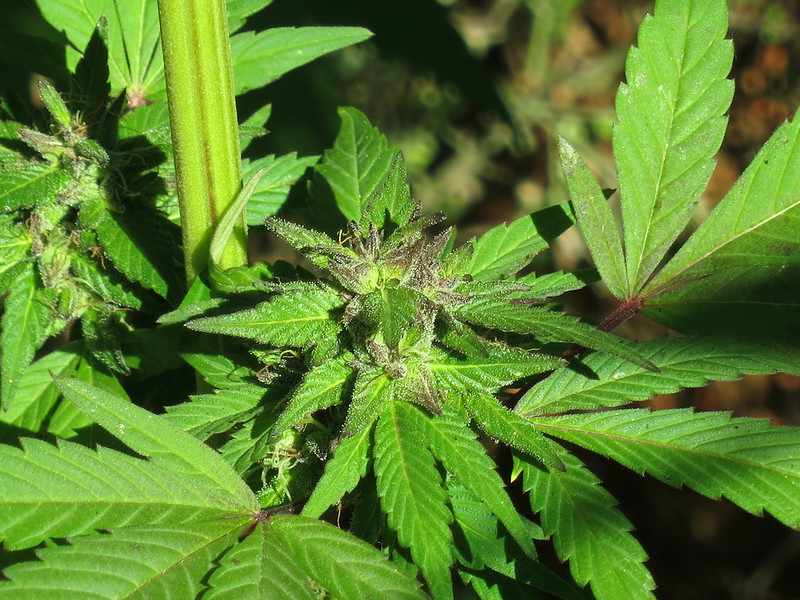
I'm really excited about this individual. To give you perspective, Kerala (a pure sativa notorious for taking a very long time to finish) is about half way done, whereas this plant pictured below is still just barely producing pistils in October! It seems breeders in the past have completely disgarded these genetics because it takes too long, or they bred with it and selected for faster finishing times:

If you have Tashkurgan growing, feel free to post your pics and experience in this thread! I'll try to keep this updated as the flowers develop.
I've read that of the two sprouts arising from a single seed, the runtier plant should be discarded, whereas the bigger one is a clone of the mother plant, can anyone confirm this is correct? If it is true, and polyembryony can be selectively bred for, then this would be another way to preserve clones long term!
Visually speaking, the plants all look similar, but there's clearly a lot of diversity: red pistils, purple bracts(enhanced by cool weather), smells ranging from standard, everyday fuel indica to very subtle fruit background, leafy versus high calyx to leaf ratio, and a wide range of finishing times.
Regarding the aromas, the buds develop very slowly, as do the resin glands. It's very difficult to detect smell at this stage, I'll have more info on that as the buds mature. Most plants aren't developed enough to give off smell.
Some pictures to enjoy! Here's the most vigorous individual from a polyembryonic seed, the runt looks identical but smaller and less vigorous.

Same plant, this is the most showy for now, and is the most advanced in terms of flowering. Bract density is very high, but the size of each bract is normal to slightly small. Check out the red stems, which were present during the vegetative stage:

Typical Tashkurgan leaf:


I'm really excited about this individual. To give you perspective, Kerala (a pure sativa notorious for taking a very long time to finish) is about half way done, whereas this plant pictured below is still just barely producing pistils in October! It seems breeders in the past have completely disgarded these genetics because it takes too long, or they bred with it and selected for faster finishing times:

If you have Tashkurgan growing, feel free to post your pics and experience in this thread! I'll try to keep this updated as the flowers develop.

